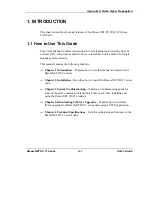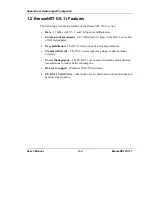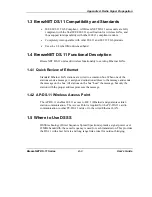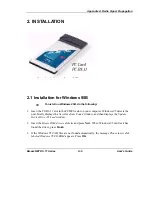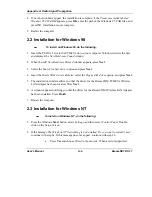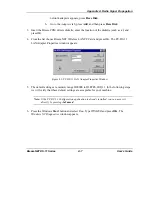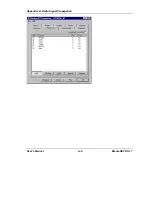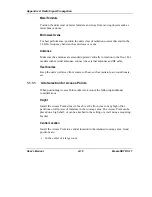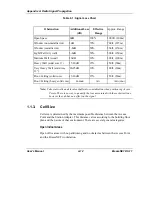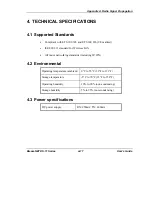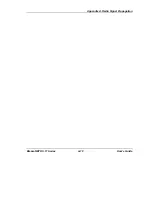
Appendix A. Radio Signal Propagation
BreezeNET DS.11 Series
A-15
User’s Guide
frequencies to each Access Point, or impose some restrictions on the use of
your wireless network.
2.
To be able to manage the Access Points via SNMP, every Access Point needs a
unique IP address. If you provide a DHCP or BOOTP service on your LAN
(and have sufficient free IP addresses available) this will be taken care of
automatically. If not, refer to Section
Error! Reference source not found.
for
further information on assigning IP addresses.
3.
Use the BreezeNET Management utility to configure the Network Settings to
reflect your situation.
4.
Select the radio channels of the Access Points according to your cell plan. See
Section
Error! Reference source not found.
for further information. Add
descriptive information about each Access Point for later reference.
3.2 More about Cells
Each Access Point in the network forms the center of a cell, or BSS. The Cells
should overlap slightly to guarantee seamless wireless connectivity everywhere.
Neighboring Access Points should preferably send and receive on different
channels for maximum throughput.
Creating a cell plan for your site can be complicated, and is usually done by experts
employing special measuring equipment.
Furthermore, the radio channels you may use depend on both the capabilities of the
PC-Cards you are deploying, as well as the regulations in your area.
The following table provides specifications for the main regulatory domains:
Regulatory
Domain
4.8.1.1 Area
Permissible
Channels
Predefined channels

